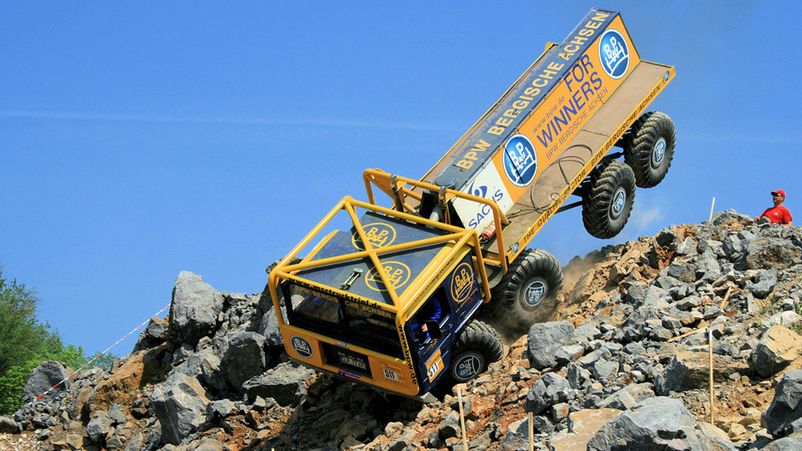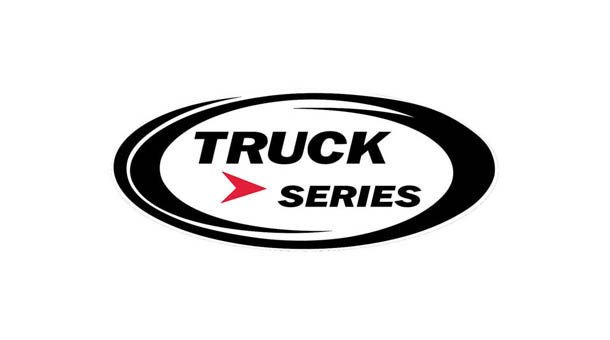"Heavy" racing is popular in America and the world, and truck circuits gather up to half a million spectators. Truck rides have become an indispensable component of motorsport, attracting the attention of professional drivers and car manufacturers. American Truck Racing and the European racing series of truck-bolides are famous for the powerful roar of engines, high speeds and the skill of pilots accelerating multi-ton monsters in seconds to “hundreds” and leading to the finish line.

THE HISTORY OF THE ORIGIN OF TRUCK RACING
There are two versions of the emergence of truck racing: American and European. According to overseas, the long and spacious highways of the United States have given the opportunity to truckers to show the power of machines that do not have enough space on the tracks. Craftsmen "finished" the motors and competed, arranging unauthorized competitions on the roads.
Regular accidents on public highways forced the police to intervene, realizing the futility of forceful methods of dealing with illegal extreme races, the authorities helped with the organization and American trucks received their own championship - Truck Racing.
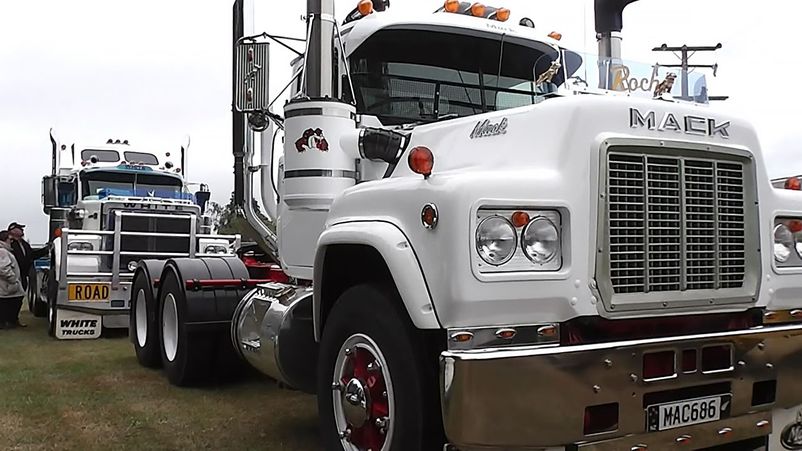
The European version tells about the drivers of Formula-1 tractors who were at the epicenter of motorsport and were eager to try their hand at the role of professional pilots. During racing weekends, high-speed races of trailerless tractors were arranged. This did not go unnoticed by the authorities and business structures.
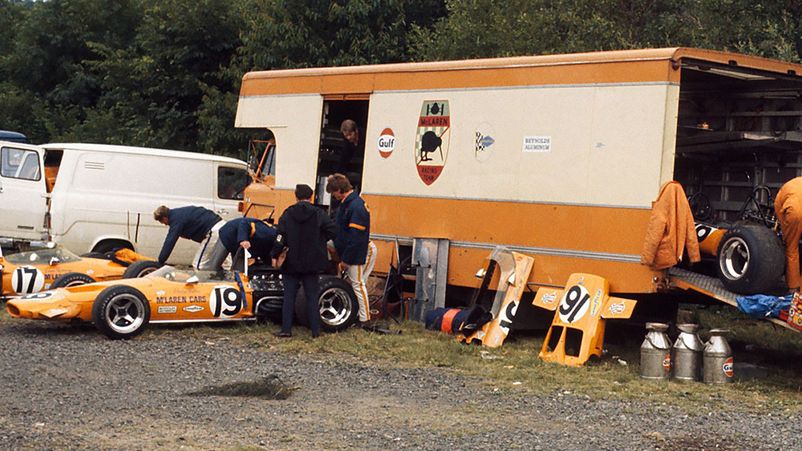
Truck racing took place already in the 70s, and in 1979 the ATRA (American Truck Racing Association) organized an official tournament. Auto-tracks were circular and dirt, and the participants were "workhorses" with standard tires, improved by mechanics. The trucks managed to show a maximum speed of 241 kilometers per hour, which proved the viability of truck racing as an auto racing sport.
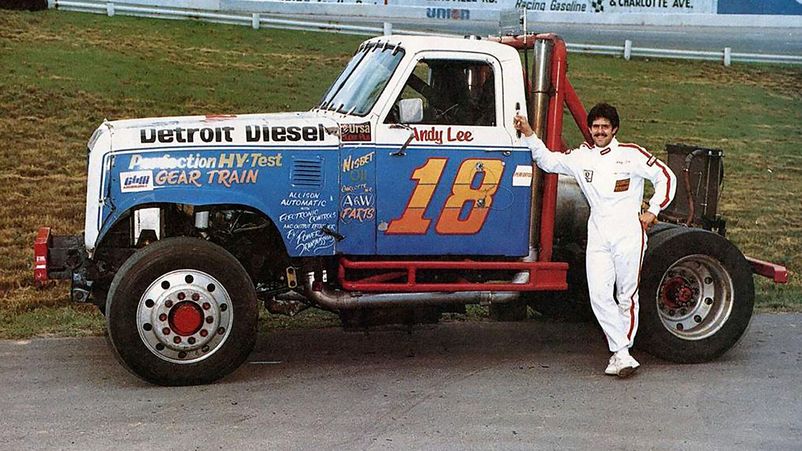
In Europe, there was no unified technical regulation of the competition, and far from equal participants competed on the track. With its appearance, interest in racing increased significantly and already in 1985 the first championship was held with the support of the FIA, called European Truck Racing. Since then, truck racing has become an official sport. 40,000 spectators came to the first race, and 100,000 fans came to the second, which became the support race of the British F1 stage.

COMPETITION FEATURES
A characteristic feature of truck racing is the start of the participants passing in dynamics (start from the move). Speed “on the line” should not exceed 70 kilometers per hour, and the maximum is limited to 160.
Truck racing began with enthusiastic drivers, but soon factory teams entered the sport, and engine power began to reach 1400 horsepower. They organized their own class - Super Race.

The rest of the cars fell into the Race Truck group, which is less powerful but more competitive in terms of fighting for the podium. In both groups, the main contenders for the title each year are MAN, DAF, Mercedes-Benz and Buggyra, who field several crews on the stage.
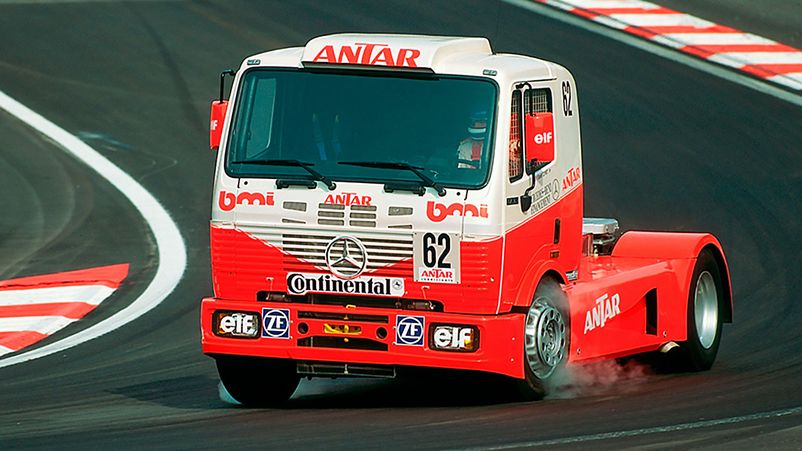
TRACK RACING IN EUROPE AND THE WORLD
In addition to the USA and Europe, Asia, Australia and Latin America have taken truck racing as part of the FIA competition. Mexico held the first "Tractocamiones" tournament in 1992, which ran until 2000, was eliminated and re-established in 2015.

Brazil organized "Formula Truck" in 1996 which involved several factory teams. In Australia, the debut of official truck races took place in 1988, European rules and regulations were taken as an example. In 2014, India and auto giant Tata Motors created the "T1 Prima Truck Racing Championship".
RACING TRUCKS AND THEIR FEATURES
Powerful trucks are not suitable for circuit racing, playing the role of a workhorse in life, and the center of gravity of the car does not allow cornering at too high speeds, which requires special professionalism of drivers. Often, races are accompanied by accidents and collisions, but rarely with serious injuries to drivers, additionally attracting spectators.
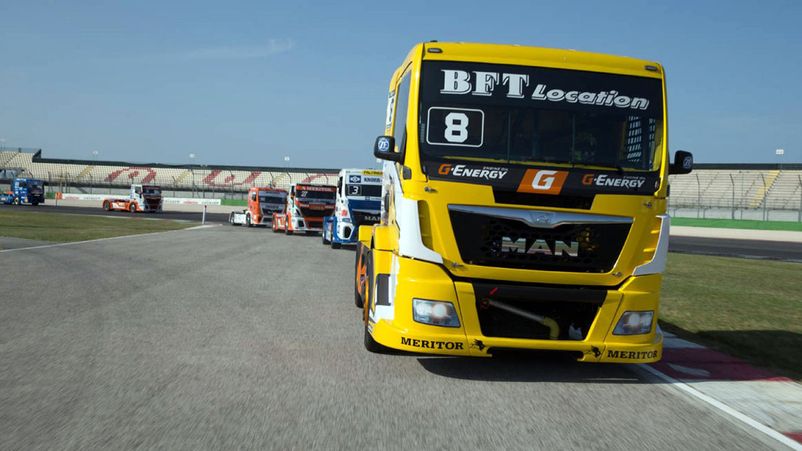
In order to reduce accidents, the speed, power and minimum weight of machines are usually limited. There is a division into three classes in terms of engine size and tonnage of the car: "A" - up to 11.95 liters and 5 tons, "B" - up to 14.1 liters and 5.5 tons, "C" - up to 18.5 liters and 6 tons.
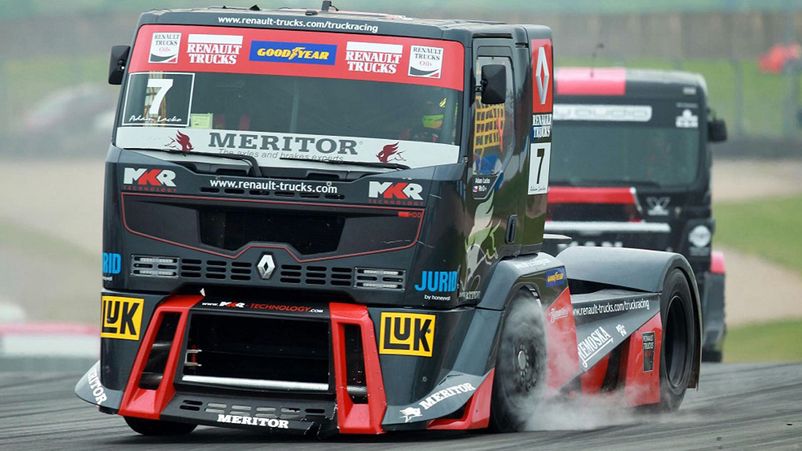
The sport has outgrown the factory models and the racing truck has become a real "car" that is not inferior to the "Formula" in terms of technical equipment. Prototypes of trucks designed in single copies began to go to the start. They compete in their groups and are not allowed to rally-raids, so they show their strength on the "rings".
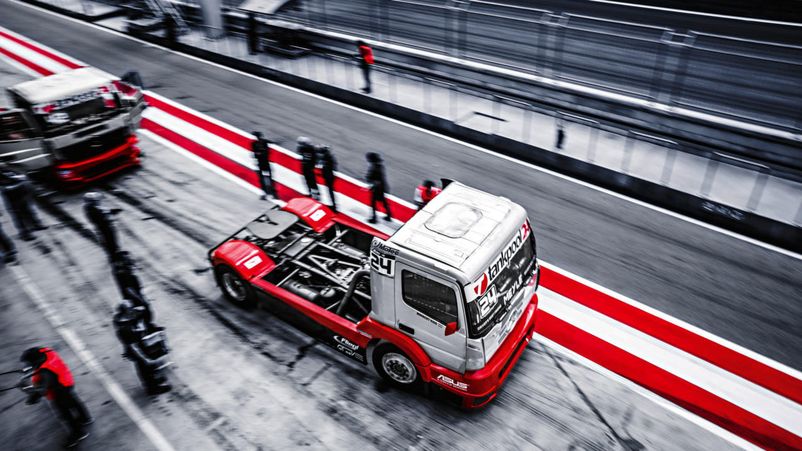
Pays attention to truck racing and such a concern as Red Bull. The company organized one of the stages of the European Truck Racing Championship at the Red Bull Ring in Spielberg (Austria).
TRUCK RACING CHAMPIONSHIPS
FIA EUROPEAN TRUCK RACING CHAMPIONSHIP
The European Championship has been held since 1985 and is characterized by the complete dominance of factory "stables". It has been held in the current format since 2006, and over the past 10 years, Buggyra trucks have become champions 3 times, MAN - 7 times. Includes 9 stages, some of which are on the "Formula" circuits in Austria (A1 Ring), Spain (Barcelona) and Germany.
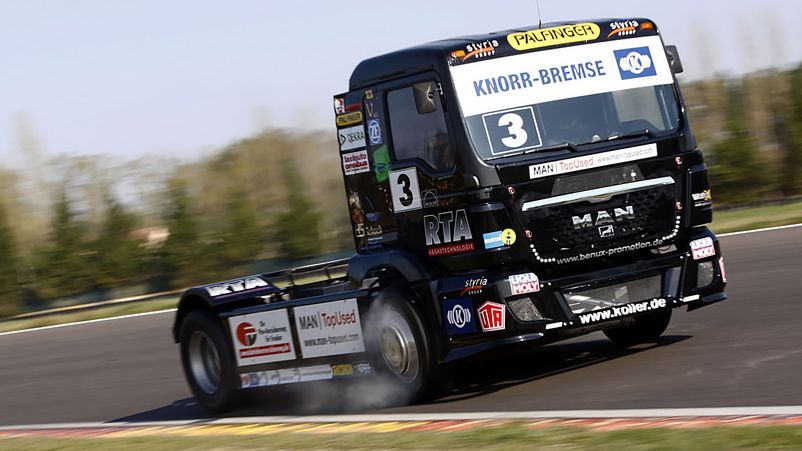
T1 PRIMA TRUCK RACING CHAMPIONSHIP AND TATA
Competitions are held in India on Tata Prima, with a capacity of 370 "horses" and a "maximum speed" of 110 kilometers per hour, supported by the FIA. The first stage was held in 2014 and 12 crews participated in it.
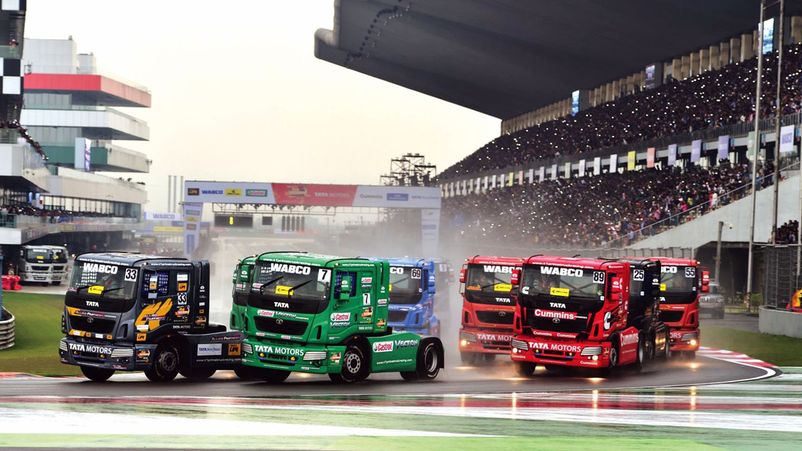
FORMULA TRUCKS
They tried to create a Brazilian tournament since 1987, but 1996 is considered the official “date of birth”. The Cup brought together 13 participating trucks. Vehicle speed is limited to 160 km/h. In 2017, it was not carried out due to the exit of several teams into a separate competition.
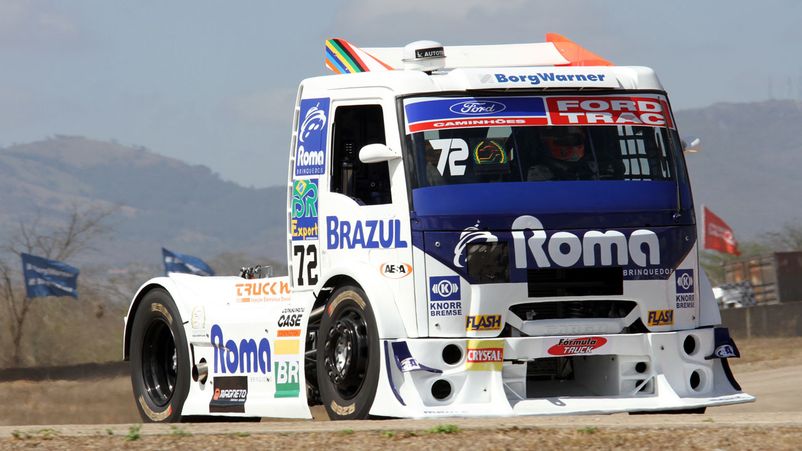
MAIN ROUTES
ATLANTA MOTOR SPEEDWAY
Located in the town of Hampton (near Atlanta, USA), the length of the oval canvas is 2.54 km, the capacity is 71 thousand people. It was built in 1960, and in 1990 it was bought out by the Speedway Motorsport Corporation and rebuilt in 1997. The configuration includes a small "ring" (0.4 kilometers) between the pit stop and the main race track.

RACE ON THE NURBURGRING
The German stage on a 5 km track with 15 turns is the most visited in the European truck racing, and the victory in it is very prestigious. The racing weekend includes tractor exhibitions, rock concerts and various entertainment events, gathering up to 150,000 spectators.
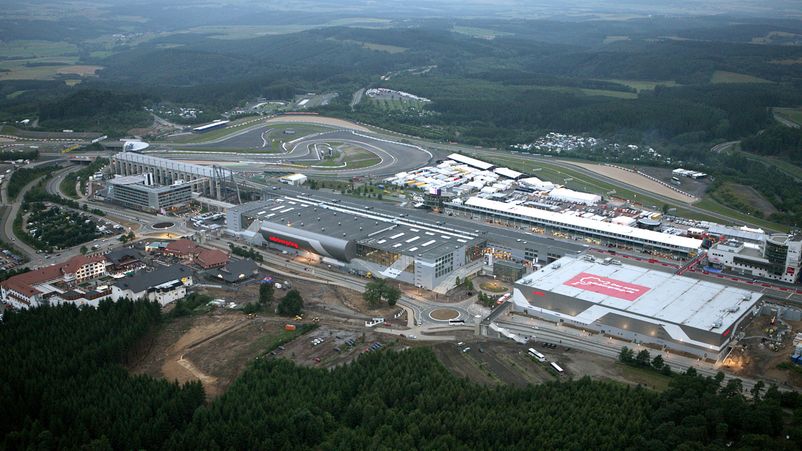
CIRCUITO DEL JARAMA
"Jarama" is located near Madrid (Spain). The lap length is 3.3 km and the 11 turns are quite slow and difficult to overtake. Designed in 1967 by John Gugenholtz, race track designer who created the Suzuka track.

TEXAS WORLD SPEEDWAY
Built in 1967, it is one of seven super speedways (3.2 kilometers long) in the United States. The shape is oval. The track is currently closed and not in use.
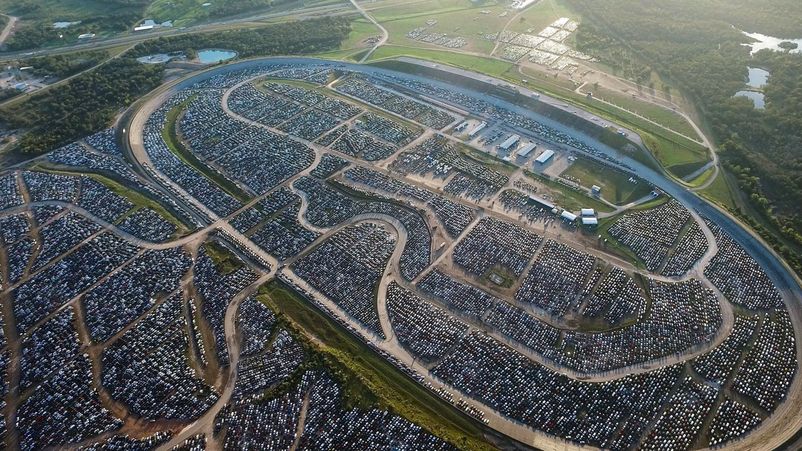
POCONO RACEWAY
Located in Long Pond (Pennsylvania), opened in 1971 and has the shape of an irregular triangle. High-speed straights of varying lengths and exits interspersed with slow turns (copied from three other tracks in the US), making the track less fast but more spectacular.
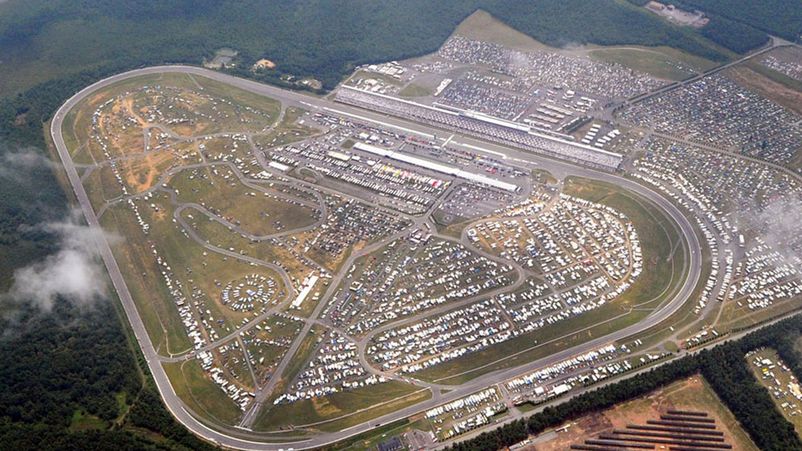
TRIAL ON TRUCKS
In addition to circuit racing and rally raids, trial competitions are held. These performances gather a huge number of spectators who watch the cars overcome all sorts of artificial and natural obstacles.
It is here where trucks show all their power and capabilities.
